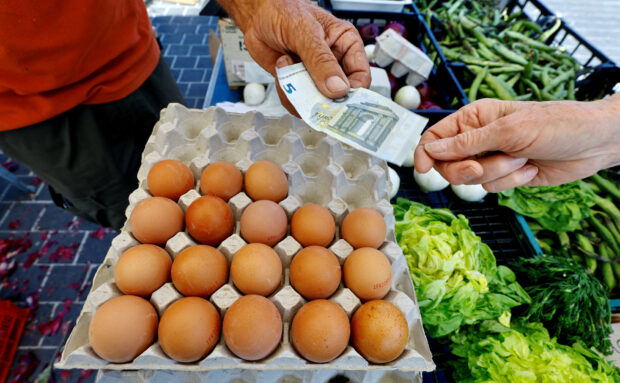Euro zone Q1 growth confirmed at 0.1%, exports jump

A shopper pays with a five euro bank note to buy eggs at a local market in Nice, France, April 26, 2023. REUTERS/Eric Gaillard/File photo
BRUSSELS – Euro zone economic growth was 0.1 percent quarter-on-quarter in the first three months of the year, the EU’s statistics agency confirmed on Tuesday, with rising employment and a sharp increase in exports that boosted the euro zone trade surplus.
Eurostat also confirmed its earlier estimate that gross domestic product in the 20 countries sharing the euro rose 1.3 percent year-on-year in the January-March period and said employment grew 0.6 percent on the quarter for a 1.7 percent year-on-year rise.
While a more detailed breakdown of the GDP rise was not yet available, unadjusted trade data for the first quarter showed an 8.5-percent jump in exports over the same period of 2022 with unchanged imports, indicating net trade contributed to the growth.
In March the unadjusted euro zone trade balance swung to a 25.6 billion euro surplus from a 20 billion deficit in the first three months of 2022. Adjusted for seasonal swings, the March trade surplus was 17 billion euros, up from a 200 million euro deficit the month before.
The better net trade result in the first quarter came mainly from higher exports of machinery, vehicles and chemicals and a drop in imports of energy.
Article continues after this advertisementImports from Russia, once a key supplier of oil and gas to the EU, were 72.1 percent lower in the January-March period than a year earlier as the EU stopped buying most of its energy from Moscow following the Russian invasion of Ukraine in late February 2022.
Also, the EU’s trade deficit with China, the bloc’s second biggest trading partner after the United States, fell in the first quarter to 74.7 billion euros from 92.0 billion in the same period of 2022 as the EU seeks to reduce its dependence on Beijing.